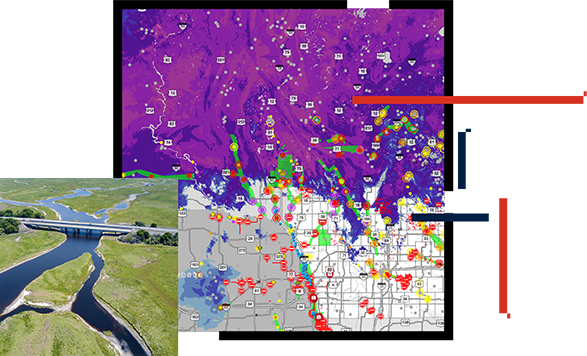Environmental analysis
Ensuring a sustainable transportation system requires a wide range of biological and environmental studies and assessments. GIS allows you to analyze a wealth of data and determine the most environmentally positive course of action. With GIS, you can combine data from multiple agencies for analysis and collaboration, then compare alternatives to make the best decisions. Communicate issues to constituents and solicit their involvement with smart maps for stronger public engagement.
Use GIS to understand wetland boundaries or endangered species, model stormwater runoff and air quality impacts, improve environmental quality monitoring, and ensure compliance with regulations.




